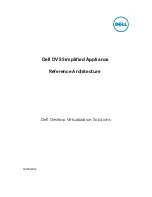
Appendix D CSUtil Database Utility
Posture Validation Attributes
D-46
User Guide for Cisco Secure ACS for Windows Server
78-16592-01
Vendor IDs have one or more applications associated with them, identified by
the application-id value.
•
vendor-name
—A string, the vendor name appears in the Cisco Secure ACS
HTML interface and logs for the associated posture validation attribute. For
example, any attribute definition with a vendor ID of 9 could have a vendor
name “Cisco”.
Note
The vendor name cannot differ for each attribute that shares the same
vendor ID. For example, you cannot add an attribute with a vendor-id
of 9 if the vendor-name is not “Cisco”.
•
application-id
—An unsigned integer, the application ID uniquely identifies
the vendor application associated with the posture validation attribute. For
example, if the vendor ID is 9 and the application ID is 1, the posture
validation attribute is associated with the Cisco application with an ID of 1,
which is the Cisco Trust Agent (CTA), also known as a posture agent (PA).
•
application-name
—A string, the application name appears in the
Cisco Secure ACS HTML interface and logs for the associated posture
validation attribute. For example, if the vendor ID is 9 and the application ID
is 1, the application name would be “PA”, an abbreviation of posture agent,
which is another term for CTA.
Note
The application name cannot differ for each attribute that shares the
same vendor ID and application ID pair. For example, you cannot add
an attribute with a vendor-id of 9 and application ID of 1 if the
application-name is not “PA”.
•
attribute-id
—An unsigned integer in the range of 1 to 65535, the attribute ID
uniquely identifies the posture validation attribute for the vendor ID and
application ID specified.
Note
For each application, attributes 1 and 2 are reserved. If you add
attributes that imply a new application, CSUtil.exe automatically
creates attribute 1 as Application-Posture-Token and attribute 2 as
System-Posture-Token.
















































